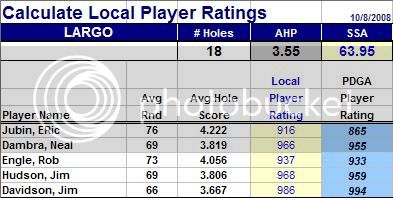- Joined
- Jan 10, 2007
- Messages
- 2,776
I've got no problem with a Par 2 hole, because skilled disc golfers only need about 1 putt per hole.
I'm really not trying to argue, but this is a unique view. Do you know of anyone with "a position of influence" in disc golf who holds this view? I used the term "a position of influence" as an attempt to designate someone with credibility and experience. I'm sure there are tons of casual rec players who have all sorts of wild ideas of their own that few other people would ever buy in to, so it's quite possible that there may be other players out there who support this "1 putt per hole" idea.
